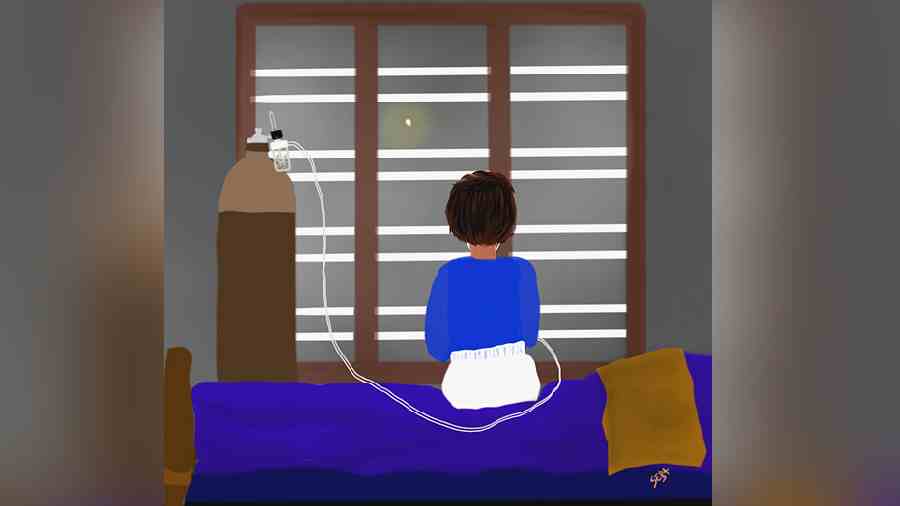Seba Salam grimaced, crying out in mock pain as her mother helped her slip into a new T-shirt. Chortling, Seba signalled that she was pulling a prank. Her mother then told a story.
Years ago, Seba was taken to a doctor who attached some wires and devices to her body. The child started wailing, prompting the doctor to wisecrack: “Kid, you need not cry now…. You’ll get plenty of chances to wail in the future!” Her mother was taken aback by the insensitive remark.
“But as years move on, life keeps presenting before me more difficult challenges and, of course, plenty more chances to wail,” Seba wrote for Cure SMA India, a non-profit organisation representing a community led by a group of parents of children suffering from spinal muscular atrophy (SMA).
Now 23, Seba, an artist-blogger from Ernakulam district in Kerala, was diagnosed with SMA Type 2 when she was around one year old.
A motor neuron disease, SMA has been weakening her body since she can remember. She spent her school days in wheelchairs.

Alone, A Firefly. Digital painting by Seba Salam
Seba has been bedridden since undergoing tracheostomy, a procedure in which an opening is created at the front of the neck so a tube can be inserted into the windpipe to facilitate breathing, in 2017. She has difficulty sitting and swallowing food. In 2020, Seba contracted Covid-19.
“The most disgusting aspect of my current struggles is that each time I almost kinda recover from a setback, another terrible trouble arises from somewhere around, to storm me again,” Seba said.
However, through the storms that buffeted her and cut her off from the outside world with the threat of infection, Seba willed herself to paint — and write.
Make no mistake: Seba does not write to gain sympathy.
“I’m doing this because I know someone should always keep raising their voice in order to get the challenges faced by people living with SMA noticed by society.”
SMA cannot be cured completely but the patient’s quality of life can be improved by providing timely and appropriate care and therapies throughout their lifetime.
Veteran journalist P. Venugopal came across the recollections of Seba on social media and was struck by the whiplash prose — so much so that he volunteered to help her translate the articles into English.
“‘Translation’ is a misnomer. Seba can write equally well in English and Malayalam. I am merely drafting her evocative prose in English — since she gets fatigued easily — which she corrects and edits,” Venugopal told this newspaper.
“There are times when it seems like I’m trapped inside a cage with no way out,” Seba writes. The yearning to break out of her cage comes through in her writings. “Mobility is a theme that runs through her articles like a common thread. It is an inescapable presence,” Venugopal underscored.
This New Year, The Telegraph is privileged to publish a selection of articles written by Seba Salam, chronicling an extraordinary journey against overwhelming odds.












